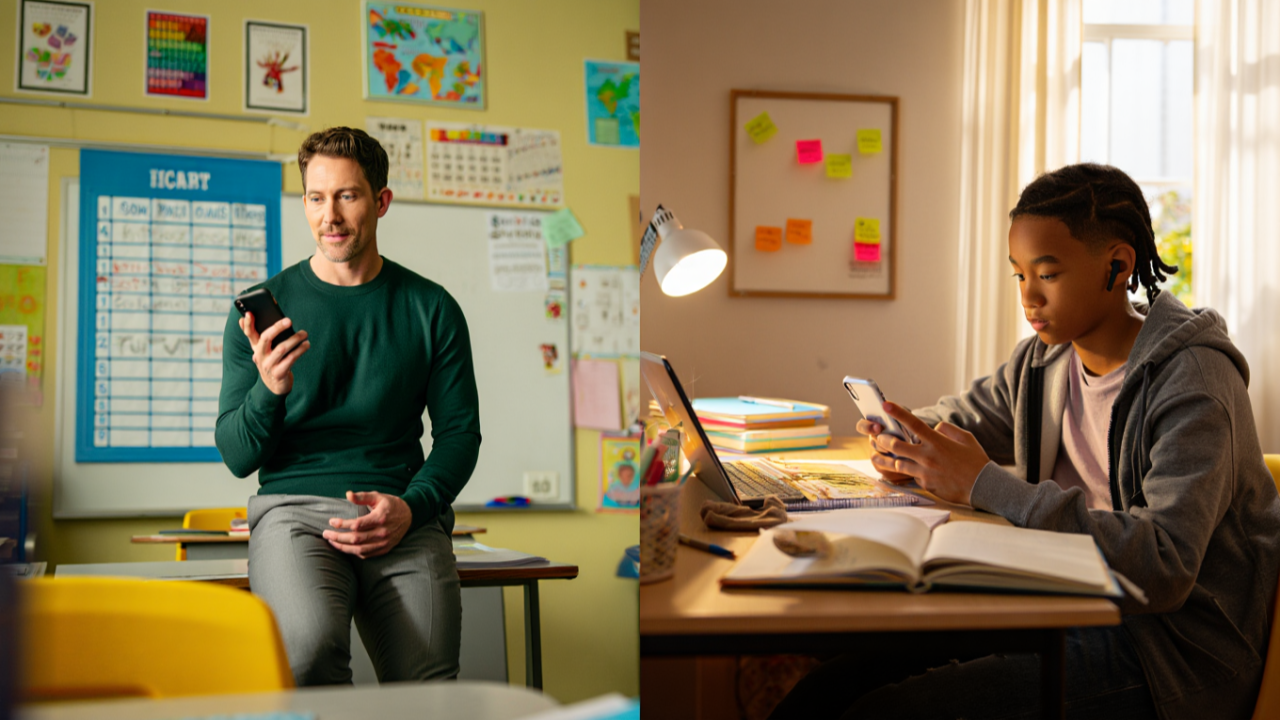What First Language Acquisition Teaches Us About Speaking a Second One

When we think about how we learn, we often forget the most obvious and relevant example, how we learn ourselves.
Before any of us knew what a verb was, or that tenses even existed, we were speaking in full sentences. Long before we stepped into a classroom, we were experimenting with language out loud, making mistakes, self-correcting, and trying again. Not once did we consult a grammar book. We learned to speak because we listened, repeated, and slowly found the confidence to make ourselves understood.
This is the core of first language acquisition: an intuitive, immersive process shaped by sound, repetition, and social interaction. It’s how every child, everywhere, learns to speak.
Linguist Stephen Krashen, one of the most influential voices in language acquisition theory, has studied this process for decades with a simple outcome: we learn by hearing language in context, attempting to replicate what we hear, and gradually refining our output through feedback. Whether that’s a parent repeating a phrase correctly or a friend understanding you the third time you try, the pattern holds. There’s no shortcut—but there is a natural rhythm: comprehend → repeat → refine.
However, when it comes to learning a second language as adults, we ignore this entire process. Instead of focusing on listening and speaking, most systems prioritise vocabulary lists, grammar drills, and passive input. The result? Learners who may “know” a language on paper, but hesitate when it’s time to speak.
The Gap: Why Adult Learners Struggle
As adults, we don’t get the same luxury of immersive, low-pressure language exposure that children do. Instead, we enter classrooms or apps, armed with notebooks and grammar guides, trying to understand a language before we ever use it. The resulting learners end up with a head full of rules and very little confidence to speak.
Krashen famously distinguished between language acquisition (an unconscious, intuitive process) and language learning (a conscious, analytical one). Most adult education systems lean heavily on the latter. We teach learners to study a language, not to live in it. But speaking a new language is less like solving an equation and more like learning to dance: you get better by doing it, not by memorising the steps.
Then there’s the psychological barrier, adults are far more self-conscious than children. We fear mistakes, we fear embarrassment. Krashen refers to this as the affective filter—the emotional block that gets in the way of language input becoming real acquisition. If a learner feels anxious or insecure, they’re far less likely to absorb the language, no matter how much they practice.
The result? Learners who know what to say in theory, but can’t get the words out in practice. They’ve built knowledge, but not fluency. They’ve studied the language, but they haven’t acquired it.
The Opportunity: Practice, Confidence, and Repetition
If the gap for adult learners is confidence, then the opportunity lies in creating more low-stakes, high-repetition speaking practice. Not just comprehension exercises or gamified vocab tests but speaking aloud, often, without fear of getting it wrong.
Fluency isn’t built through explanation. It’s built through expression which requires two things: a model to imitate, and the space to try.
This is where the logic of first language acquisition becomes so valuable. Children aren’t fluent because they study. They’re fluent because they listen, repeat, and are constantly allowed to speak. They make thousands of small attempts—mispronunciations, rephrasings, corrections—without judgment. And that’s exactly what adult learners need more of.
What’s missing in most language apps and classrooms is this kind of productive practice. Not just hearing the language, but producing it. Not once, but over and over again, in a way that builds muscle memory and emotional ease.
What learners need is scaffolded repetition—guided speaking that supports them phrase by phrase, helping them sound out the language with confidence, even before they feel fluent.
Because once you’ve said it out loud, clearly and correctly—even just once—you start to believe: I can speak this
Where YoYo Fits In
At YoYo, we’ve taken inspiration from this learning methodology and shaped it into a tool that supports the role of the tutor.
Tutors can choose the phrases they want their students to focus on, and students can then practise those phrases in their own time. The aim is to create a low-pressure environment where repetition feels safe and supported. With real-time pronunciation feedback from AI, learners start to gain a clearer sense of how they're doing—not just what they're saying, but how it’s landing.
It’s building awareness, reinforcing sound patterns and helping students move through that natural progression: comprehend → repeat → refine.
And at every stage, the tutor remains an essential guide—reviewing progress, adjusting practice, and offering the human connection that language acquisition ultimately depends on.
Let’s have a Conversation
If you’re a language educator, I’d love to hear from you. What have you seen help students speak more confidently? Where do you think the biggest gaps are between knowledge and expression? Let’s talk.
